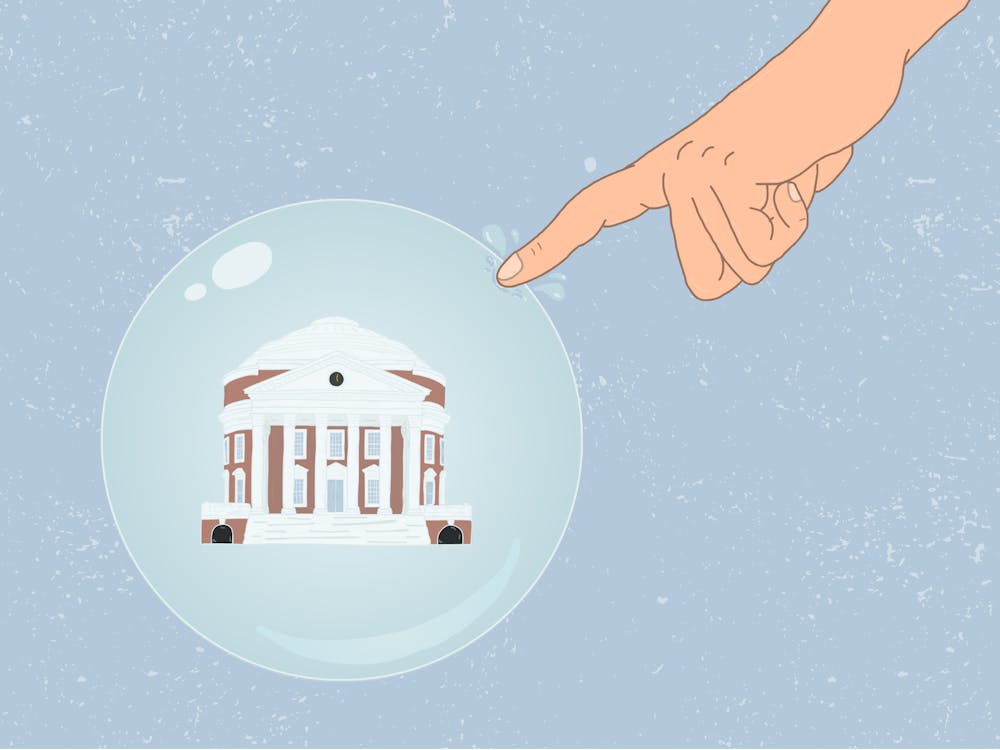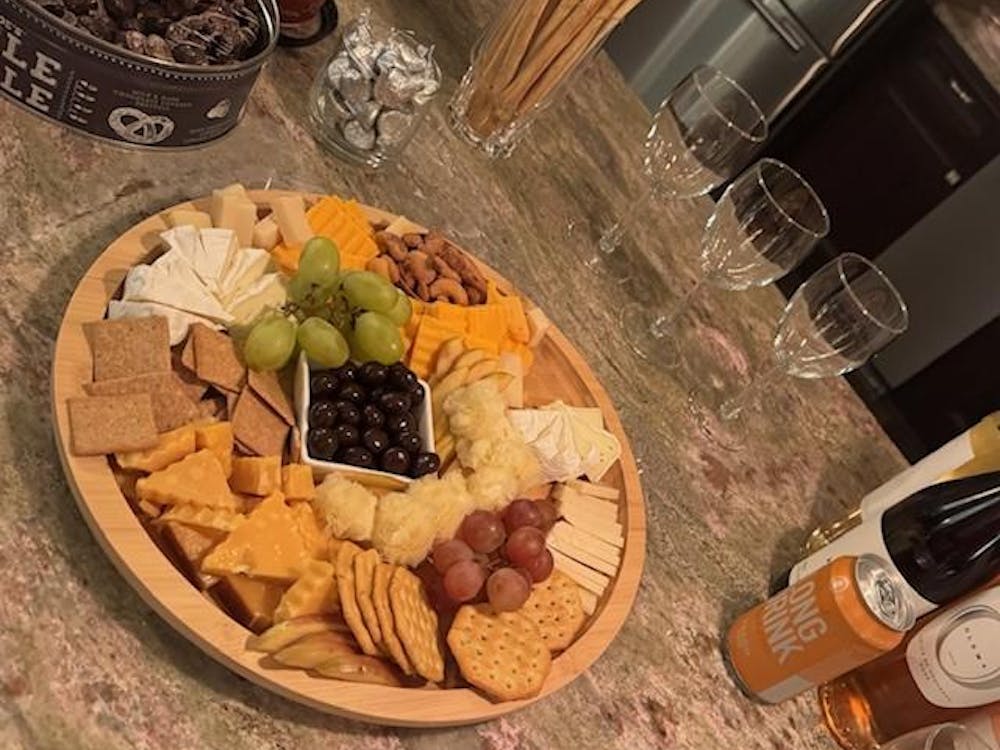Passing through the gated enclaves of the pavilion gardens to the other side of the snaking serpentine walls, visitors undergo an instantaneous transformation. The hectic activities of everyday University life dissipate in the serene and inspirational atmosphere.
The antiqued white swinging gates lead visitors not only to neatly paved walkways, well-tended flowers and small ornate stone benches, but also a quirky collection of spires and sculptures one would never expect to find in such secluded little hideaways.
Gavin Litchfield cradled his girlfriend Heather Bates on a white bench among Garden VII's vines yesterday afternoon.
"I was thinking the other day, I wouldn't mind having this for a backyard," Litchfield said.
The fourth-year couple frequents the secluded area, saying it's a wonderful place to spend time together, having picnics in the summer or just relaxing.
"We're gonna miss these places when we graduate," Bates said.
But the gardens have not always been such a haven. Only in the past 50 years have the gardens become a playground for those lseeking an escape from the trials and tribulations of University life.
"Prior to the 1950s they were private gardens, and were changed [in design] with every new [Pavilion] occupant over the years, just as any backyard might be," University Landscape Architect Mary Hughes said.
In the 1950s the Garden Club of Virginia began a restoration project intended to turn the private gardens into public areas that replicated Thomas Jefferson's original designs.
"We hired a qualified architect for restoration and recreation of the period during which the gardens were constructed," said Mina Wood, president of the Garden Club of Virginia.
Wood said the club hired landscape architect Alden Hopkins to renovate the five pavilion gardens on the West Lawn between 1947 and 1953, and the five East Lawn pavilion gardens between 1960 and 1965.
From offering a place for weddings or other receptions and ceremonies, to serving as a quiet spot for study and conversation, the gardens provide a beautiful setting for almost anyone.
Students can even put their names into a lottery through the Newcomb Hall Reservations Office to be eligible to hold a graduation party in one of the gardens during the spring.
Of course, such formal affairs are not the only way to enjoy the gardens. This is a university, after all, and the gardens often serve, appropriately, as locales for academic discourse.
"Having one of my discussions last year in a garden really rejuvenated me for the day," second-year College student Stefanie Bradley said.
But while students swarm in nice weather to open areas such as the Lawn or the Quad in old dorms, they tend to forget the Gardens offer a peaceful and undisturbed location for study.
"Tourists pass through for sure, but only every once in a while will students be reading or sleeping on the benches," Pavilion V resident Kim Snyder said.
Features specific to some of the gardens reflect Jefferson's significance and add historical value to them. On the west side of the Lawn, a Garden Club of Virginia plaque says the curving walls surrounding the gardens were originally designed and built by Thomas Jefferson as a part of his architectural plan for the University of Virginia.
"Pavilion VI's garden is known for the spire in it, which came from Oxford University," Pavilion X resident Petie Ern said. The Merton Spire was presented as a gift to the University in 1928 to honor Jefferson's educational ideals.
Outside Pavilion VII's garden is a cast-iron capital once part of a decoration for the Rotunda's annex until it burned down in 1895.
"There is also a stone capital that Jefferson intended to use for the Rotunda. But the quality was not good enough. The capital is now in Pavilion I," said a member of the Garden Club of Virgina Restoration Committee who, in traditional manner, wished to be referred to as Mrs. Charles H. Seilheimer.
Of course, for some, the historical aspect of the gardens rank second to the endless possibilities for recreation they offer with just a little imagination.
"Our grandchildren love to run underneath the boxwood in our lower garden. They call our backyard the secret garden," said Pavilion X resident Ernie Ern, University senior vice president for development.
With all the landscaping and renovations that make the gardens so enchanting, combined with the maintenance required by the intricacies of the planting, Hughes speculates the gardens may be "one of the most expensive pieces at U.Va. to maintain."
"We are raising a maintenance endowment of $20,000 annually for adequate preservation of the gardens. And there is more money spent on the University of Virginia gardens than any other project worked on by the Garden Club of Virginia," Hughes added.
University graduate Pam Sprouse (CLAS 1978) has fond memories of her own wedding reception, held in one of the gardens in 1978. "It was like a spring picnic atmosphere. We wore chiffon peasant-style dresses so we fit in with the surroundings," Sprouse said in a dreamy reminiscent tone. "And all the little kids had fun climbing the apple trees."
The historic and enchanting beauty of the gardens provides the perfect setting for special occasions and will lift almost any spiriy. They are an opportunity for students and faculty alike to escape the hustle and bustle of work and school, whether used as a spot for study, lunch, conversation, a date, or even a quick nap.






